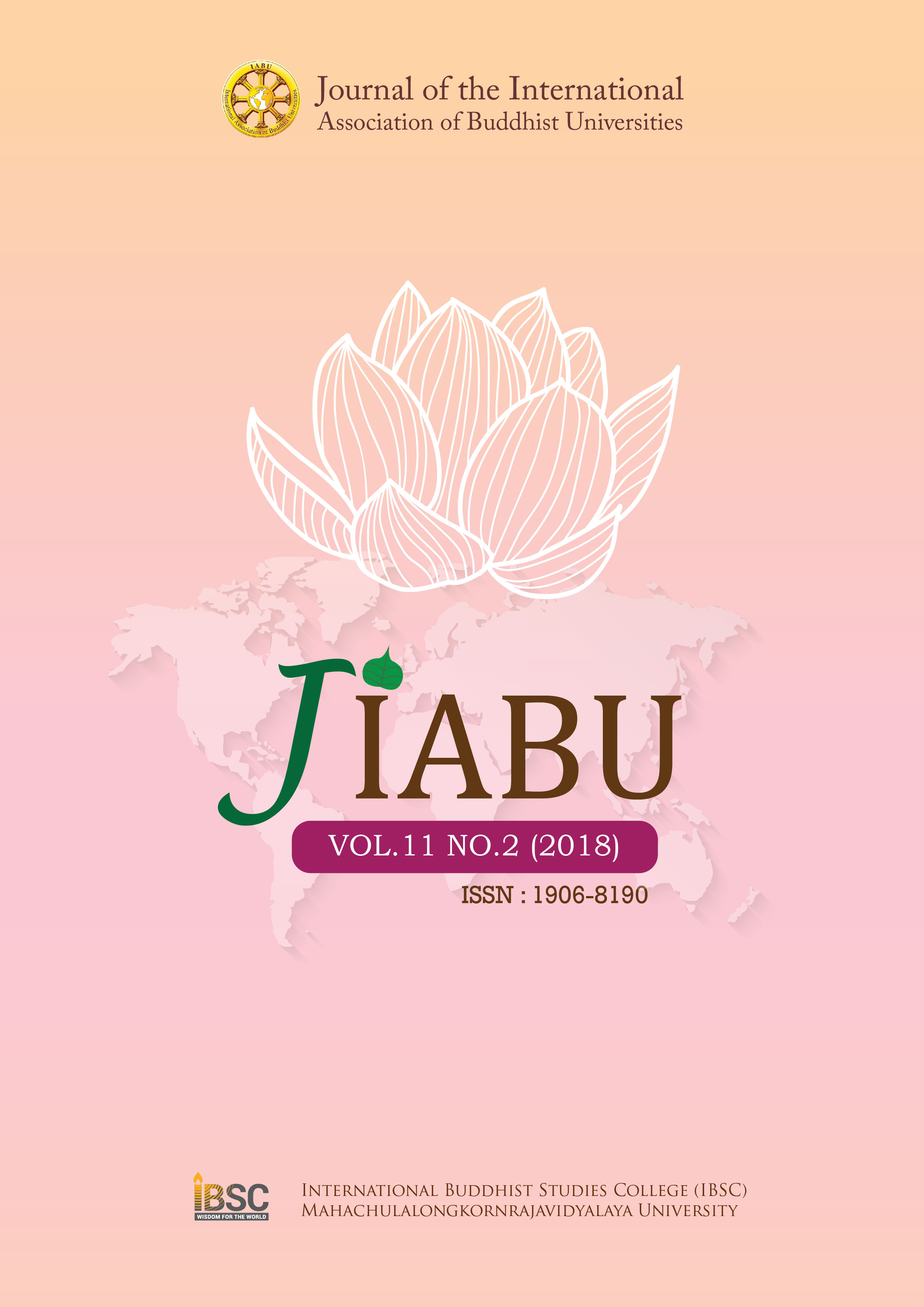Female Practitioners at the Crossroad: The Organization and Identification of Bhikkhunis in Taiwan
Main Article Content
Abstract
Buddhist nuns in Taiwan have shouldered educational, cultural, economic, and social
responsibilities, in such a way that Chinese Buddhism has been transformed in Taiwan and
overseas. In recent years, nuns in Taiwan have established various associations to accomplish
their goals and satisfy their needs. This paper will focus on three main questions: 1. How
can a Buddhist organization be distinguished from a temple? 2. Does the constitution of
female Buddhist organizations reveal gender confl icts in Buddhism? 3. How can nuns in
Taiwan establish their identity by associating together? This paper will mainly study on the
Chinese Buddhist Bhikkhuni Association (CBBA), because it has attracted members together
to work for religious causes and social needs since 1996. However, with a mission to promote
female practitioners’ role in Buddhist circles, the CBBA has not contributed much to gender
equality in Buddhism. The present research argues that the CBBA has not managed to unite
nuns in Taiwan, because it has not supported nuns’ education, nor recruited highly educated
ones. In conclusion, the research suggests that the CBBA should: 1. Connect with Buddhist
organizations in order to achieve unity. 2. Revolutionize the Buddhist hierarchical system by
creating a space for younger generations’ development. 3. To allocate financial contributions
from social charities to nuns’ education in order to foster an active female presence role in
Buddhism in the future.
Article Details
Views and opinions expressed in the articles published by The Journal of the International Association of Buddhist Universities (JIABU), are of responsibility by such authors but not the editors and do not necessarily reflect those of the editors.
References
responsibilities, in such a way that Chinese Buddhism has been transformed in Taiwan and
overseas. In recent years, nuns in Taiwan have established various associations to accomplish
their goals and satisfy their needs. This paper will focus on three main questions: 1. How
can a Buddhist organization be distinguished from a temple? 2. Does the constitution of
female Buddhist organizations reveal gender conflicts in Buddhism? 3. How can nuns in
Taiwan establish their identity by associating together? This paper will mainly study on the
Chinese Buddhist Bhikkhuni Association (CBBA), because it has attracted members together
to work for religious causes and social needs since 1996. However, with a mission to promote
female practitioners’ role in Buddhist circles, the CBBA has not contributed much to gender
equality in Buddhism. The present research argues that the CBBA has not managed to unite
nuns in Taiwan, because it has not supported nuns’ education, nor recruited highly educated
ones. In conclusion, the research suggests that the CBBA should: 1. Connect with Buddhist
organizations in order to achieve unity. 2. Revolutionize the Buddhist hierarchical system by
creating a space for younger generations’ development. 3. To allocate financial contributions
from social charities to nuns’ education in order to foster an active female presence role in
Buddhism in the future.


